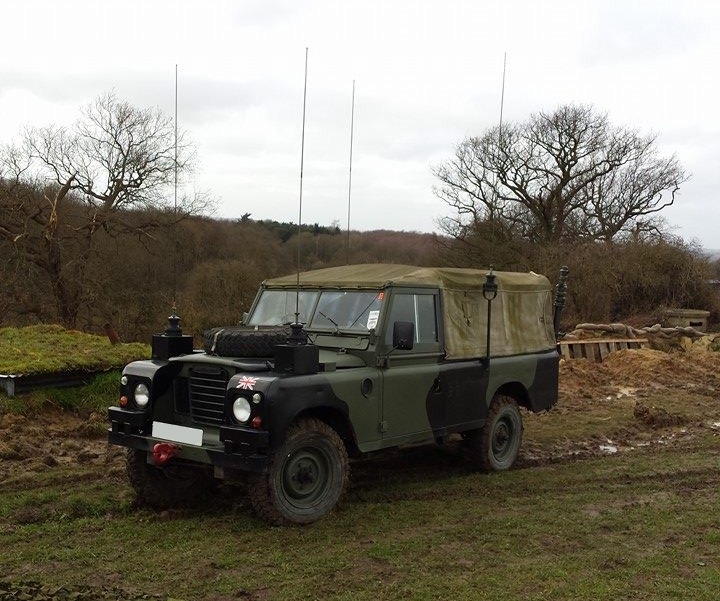What is an FFR
An FFR (Fitted For Radio) vehicle is one specially adapted for the communications role. Unlike the standard 12v Landrover the electrical system is uprated to 24v through out including all lights so care has to be exercised when towing trailers. 12v bulbs tend to have a very bright but short lide when hooked up to a 24v system. In addition to the upgraded electrics an FFR will be carrying 6 x 12 volt batteries. Two between the driver and passenger set that provide the cehicles electrical supply and another 4 in a special carrier in the back to provide power to the radio systems. Early vehicles like mine have a massive generator control box in the rear behind the drivers seat and a shunt box in the rear behind the passenger set to distribute the power to the radio batteries for charging. Twin ammeters are fitted to the dash to indicate cherging levels. Later ones had a combined unit with a single ammeter bolted to the bulkhead between the front seats. A hand throttle is fitted to the front bulkhead to allow the engine to be run at fast idle when laagered up for battery charging.
The boxes on the front wings are housing TUAAM's (Tuner Unit Automatic Aerial matching)
which sit between the arial on top of the box and the VHF band radio's in the back. The side stalks carry aerials for the UHF band radios. In addition 55 FM 58 is fitted with special rear bumperettes that permit a 9 metre extending mast to be fitted to the vehicle for long range communications whilst parked up. The mast can be rapidly dropped and left in situ in case of a need for an emergency bug-out. A 9x9 command tent can be carried either in the vehicle load bed or in a 3/4 ton Sankey trailer that has a special sleeve allowing it to to be connected to the read of the vehicle

